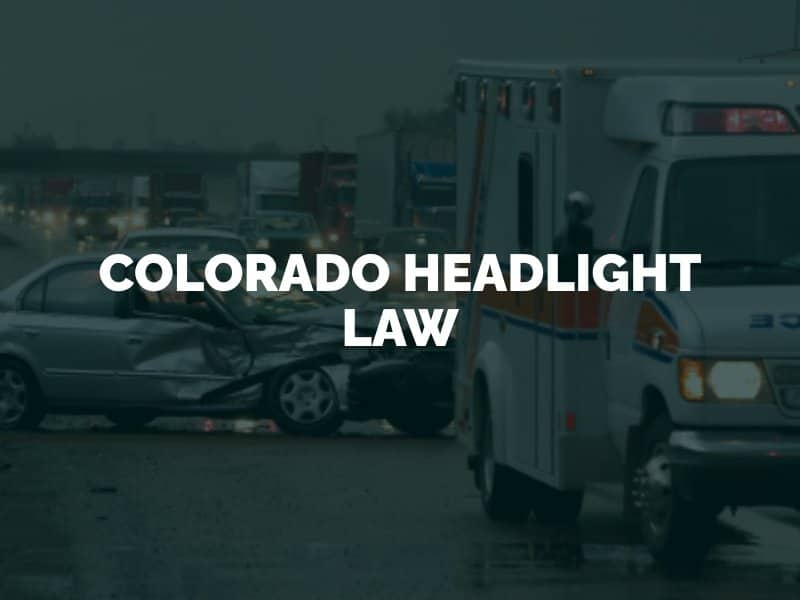Headlights are a critical safety feature for driving between dusk and dawn. If used incorrectly, however, they can be dangerous. Every driver in Colorado has a responsibility to know and obey Colorado’s headlight laws – including when to use them, when not to use them and how bright headlights should be. If a car accident is caused by a driver’s negligent failure to follow one of the state’s headlight laws, he or she may be held financially responsible for the wreck.

Colorado Revised Statutes Section 42-4-204 states that headlights must be used between sunset and sunrise, as well as at any time when people and vehicles on the highway are not clearly discernible at a distance of at least 1,000 feet ahead due to insufficient light or unfavorable conditions, such as bad weather. In these scenarios, all drivers are required to display lighted lamps and illuminating devices as described by law. Breaking this law is a Class A traffic infraction.
The types of headlights and other illuminating devices that are required by law in Colorado change according to the type of vehicle. Section 42-4-205 of the law states that every motor vehicle must be equipped with at least two headlamps, other than a motorcycle, which is only required to have one (and no more than two) headlights.
Standard motor vehicles must have at least one headlight on either side of the front of the vehicle. The headlights on any vehicle, including a motorcycle, must be located at a height measured from the center of the headlight of between 24 and 54 inches. Breaking this law is a Class B traffic infraction.
High-beam headlights refer to headlamps that allow a driver to arrange the distribution of light to project them higher than normal to reveal people and vehicles at a distance of at least 350 feet ahead. By comparison, regular headlights reveal people and vehicles at a distance of 100 feet.
High-beam headlights can be useful in low light conditions, such as on a rural road in Colorado without streetlamps. However, when used incorrectly, they can interfere with the visibility of other drivers. It is against the law in Colorado for a driver to fail to dim high-beam headlights when an oncoming vehicle approaches within 500 feet from the opposite lane or there is a vehicle ahead of the driver within 200 feet (Section 42-4-217).
If a driver in Colorado fails to switch from high beams to regular headlights when the law requires the driver to do so, he or she can face a Class A traffic infraction. The punishment for this citation is a fine of up to $100, plus two points added to the driver’s license.
Headlights should be a safe and appropriate color to illuminate the road without causing a glare or being directed into the eyes of other drivers. Certain headlight colors are expressly forbidden in Colorado, such as green lights. Headlights that have been customized and are too bright are also against the law. Ultra-bright high-intensity LED headlights, for example, that appear more blue than white softer white or yellow, may be dangerous if they are intense enough to impact the visibility of other drivers.
Drivers in Colorado are required to obey the state’s headlight laws to prevent accidents related to visibility. If the incorrect use of headlamps causes an accident, the at-fault driver can be held responsible for the crash. This means that his or her car insurance will have to pay for victims’ medical bills and property repairs.
Common headlight errors include driving at night without headlights, driving with broken or faulty headlights, using excessively bright or custom headlights, and driving with the high beams activated regardless of other motorists approaching. A Denver car accident attorney can help you prove liability for an accident caused by someone else’s negligent headlight use in Colorado.